At first glance, the desert looks barren; it’s dry, with very few plants and even fewer animals.
However, at closer inspection, there are many ways to avoid starvation in a survival situation in the desert if you know what to look for. Finding wild edibles in the desert can be a tricky thing but with the proper knowledge, you won’t starve.
The first thing you need to know is that not every plant or bug is edible. Some are even poisonous so it’s crucial that you know the difference. If part of your survival plan includes venturing into the desert, we recommend adding a book about edible and poisonous desert plants and bugs to your bug-out bag so that you’re not depending upon memory.
The primary desert in the US is the Sonoran Desert and there are more than 540 edible plants that natives have been using to survive and thrive for hundreds of years. You may not get fat from them but you will stay alive, which is all that matters in a survival situation. Though we can’t hit all 540-plus edibles here, we’re going to touch on some of the most common and easily accessible.
Water
Your most pressing need is going to be water (and shelter of course, but that’s a different article) because you can live for 3 weeks with little to no food, but only about 24 hours before your body starts to shut down from dehydration. Eating will increase your body’s need for water, so if you don’t have water, don’t eat until you find a source.
Fortunately, there are sources of water in the desert in the form of plants, and we’ll get to that in a bit.
1. Prickly Pear Cactus
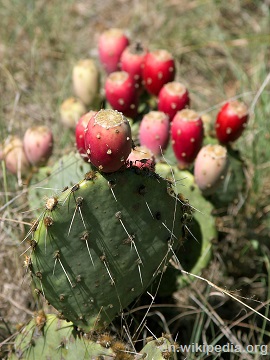
They may not all taste fabulous, but you can eat them and they are often good sources of water and nutrients. One of the more pleasant cacti to eat is the prickly pear cactus. It’s about 85% water and has a high sugar and fiber content.
The light green, spiky leaves, often called pads, are often boiled or eaten raw in salads. The flowers are a beautiful dark pink color and are edible.
The fruits, oddly enough called tuna, are actually tasty. They’re fruity tasting and are often dried and candied but they’re good raw, and they have a decent water content so it’s a good bang for your buck.
2. Saguaro Cactus
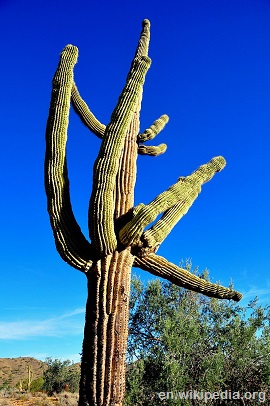
They produce edible white flowers with yellow centers in the early spring – May or so – and bear edible large pink and red fruit during the next couple of months.
This cycle ends around June but even if you aren’t fortunate enough to find a flowering, fruiting saguaro, you can still benefit from the spongy, fibrous interior that acts as a sponge for storing the water in the plant. You can eat it and extract the water from it to survive.
3. Desert Christmas Cactus
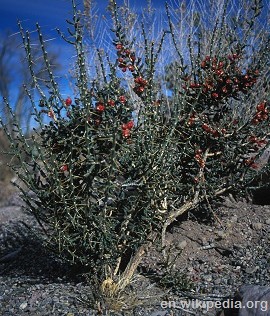
They’re often found alongside bushes and produce little red berries with spines on them, but you can scrape them off with a knife.
The berries taste a little like strawberries and are a good source of vitamins, including vitamins C and A.
4. Chia Sage
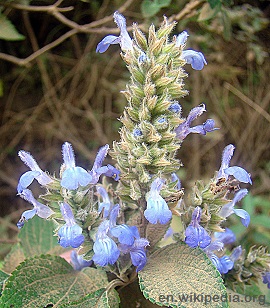
Also known as golden chia or desert chia, this short plant with dark purplish spiky balls with periwinkle-colored tiny flowers and textured leaves can be eaten raw or used as seasoning for soups and stews.
The entire plant is edible. It’s usually about 10 inches to 2 feet tall and looks like a bush, or in particularly dry areas, may grow as an individual flower.
5. Agave
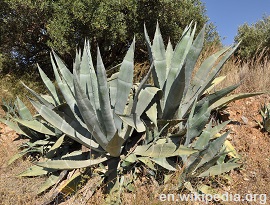
The entire plant, including leaves, flowers, stalks and seeds are edible on many species though some are too dry to be eaten. They’ve historically been used to make string, baskets, rope and shoes.
6. Pinyon Pine
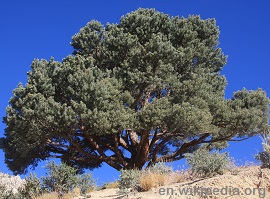
The seeds, known as pine nuts, are packed with nutrition and are also delicious. The pitch from these trees makes a great glue.
7. Mesquite
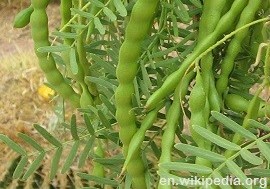
You can dry them and grind them into a flour that can be mixed with water to be eaten raw or baked into a cake.
8. Cholla Cactus
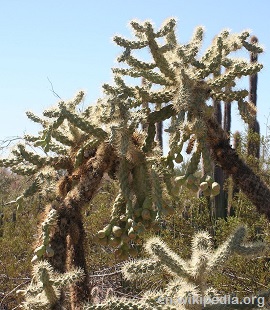
The flowers and seeds are edible and nutritious.
The plant is bushy and covered in spikes that can be quite painful to touch.
Be careful harvesting the flowers but don’t pass them by just because they look intimidating!
9. Yucca
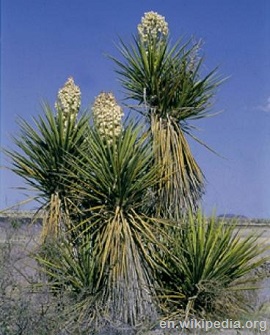
The leaves are oily and can be eaten by removing the outer skin and boiling the insides. You could eat it raw if you have to. The roots of the plant are edible, too.
If you do eat the roots, they contain saponin which can be toxic in large amounts. You can boil them to remove most of the saponin. Just FYI, there have been no reported deaths from eating raw yucca root but I wanted to let you know about it.
Other desert edibles include miner’s lettuce, stinging nettle, bushmint and tepary beans.
What NOT to Eat
Don’t eat any plant that has a milky sap – it’s poisonous. Also, don’t eat ANY red beans. If possible, boil plants before you eat them and do tests on plants that you’re not sure about. Rub some on a small spot of skin. If you don’t have a reaction within 15 minutes, try rubbing it on your lips. If you don’t get a reaction in 15 minutes, put some in your mouth, again for 15 minutes. Chew it and keep it in your mouth for 15 minutes.
If you still don’t have a stinging, burning or itching sensation, swallow it and don’t eat anything else for at least 12 hours. If you don’t get sick, the plant is probably edible. This may seem like a huge process but if push comes to shove, it’s a way to test for edibility.
We know for a fact that we didn’t come even close to listing all of the edibles in the desert. We’d love to hear more suggestions from you in the comments section below!


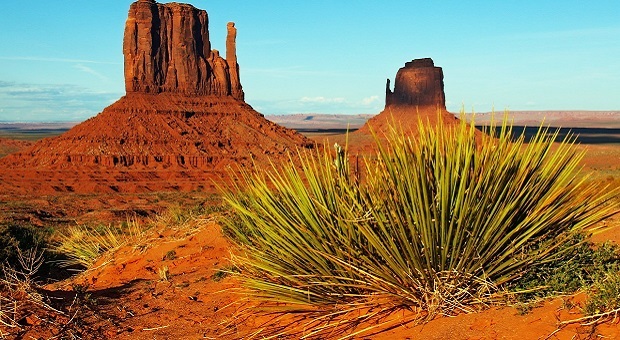



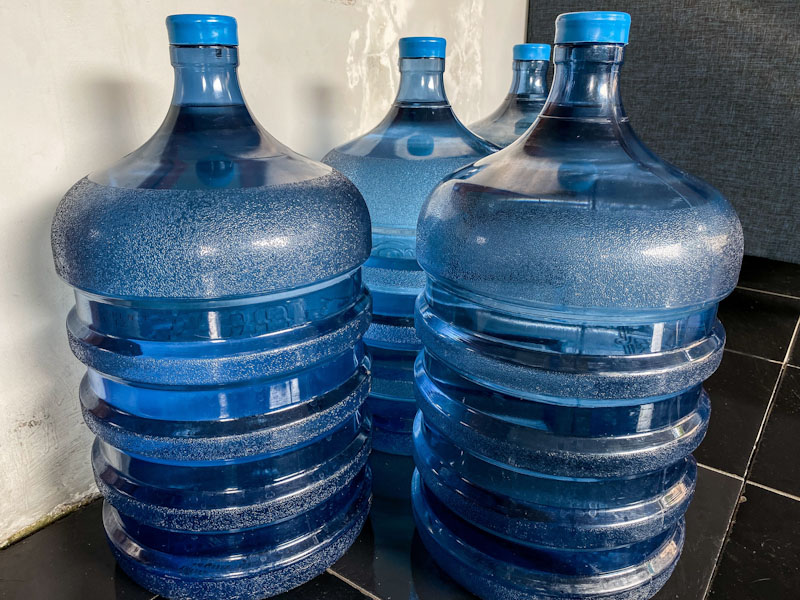
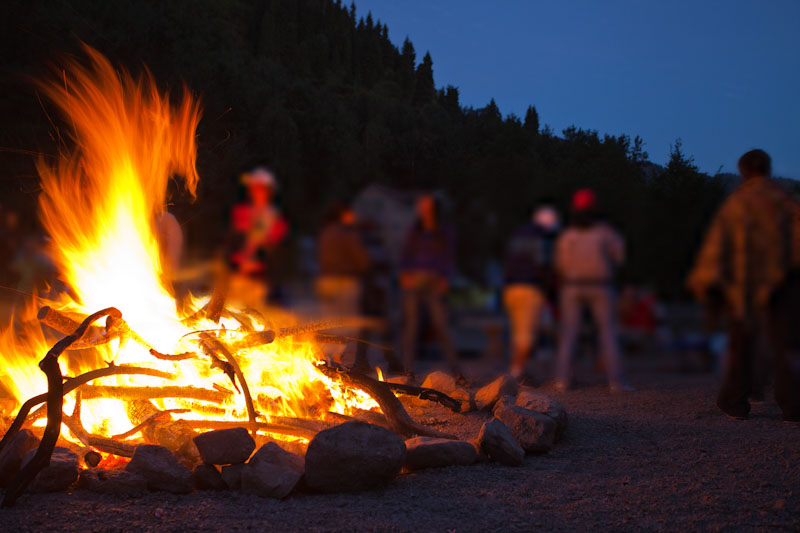
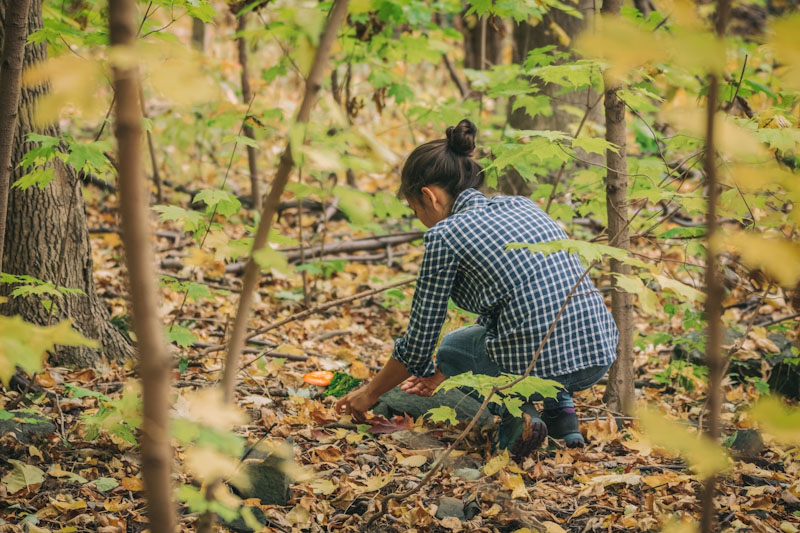


tim | August 20, 2015
|
Your articles are the best and most practical info! thank you!
It always pays to keep a pair of tongs in the car. Driving around San Diego, we often happen on cactus with tunas ready to harvest. They make great snacks straight from the freezer.
Marty | July 14, 2019
|
I’ve read you can burn off the spines in a fire and feed the tunas to feed horses. Is that how people eat this cactus?
Pingback:9 Wild Edibles To Find In The Desert | TheSurvivalPlaceBlog | August 20, 2015
|
Fran | September 8, 2015
|
Hi: Can you give some info on Aloe Vera plant? I cut a leaf open once, but got turned off with the smell. Thank you!
Pingback:10 Spring Edibles To Look For In Your Backyard | | disasterdefense.us | February 21, 2016
|
Pingback:10 Spring Edibles To Look For In Your Backyard – The Prepper Dome | April 4, 2016
|
tsimahei | May 22, 2016
|
Word of caution on cactus. Leaves are a great way to unblock bowels. When eating them, most people use a few strips of napolitos (pickled, tastes like ‘kraut) in fried eggs. More, you risk diarrhea.
There is no such thing as thornless cactus. So-called thornless still have hair-fine thorns. By tradition, even fruit was picked with tongs, then scorched off. The fruit, BTW, is loaded with seeds animals like, like chickens. When they ripen, watch for wild pigs and a razorback hogs.
People are also raising foreign cactus, and I have no idea is they’re eatable.
Agaves, all of them, must be cooked or you risk something called goat-head disease. Saponin (soap) causes the brain to swell and can crack the skull! Cooked, boiled or roasted, they’re among the best eating. Fruit and bulbils (tiny bulbs produced on a stalk like garlic ‘seed’) when roasted is almost too sweet to eat. Use raw peelings to poison rodents.
Yucca, if you’ve never eaten it, cook first. Do not try the root of fruit raw. Banana yucca is eatable raw, unless one is sensitive to it. Nothing else should be eaten raw.
You didn’t mention ajo lily, which if someone lives in the lower desert they should plant. It’s like garlic, but very ornamental and very hardy.
nd | December 9, 2017
|
THANKS
Pingback:Survival Lessons From The Pioneers: The Donner Party | Survivopedia | June 8, 2018
|
mike s. | December 18, 2018
|
hackberry found in the sonorand desert has orange berries. edible. also, I was just alerted that the Arizona Desert-thorn, a type of wolfberry, is edible and tastes vaguely like a salted tomato. of course you must properly ID any berry and NEVER eat white berries. all are toxic.
tsimahei | December 24, 2018
|
Mesquite leaves are high in protein. Mind that it is mesquite and not something like mescal beans, which are deadly. Pick them off the tree. Those on the ground will be overrun by rodents. Everything eats mesquite in season, even predator animals. It’s high in sugar and tasty. And, a plus, gluten free.
All parts of agave should be cooked to destroy saponins, or the brain will swell and cause excruciating pain before death. It’s called goat-head disease, because when the Spanish introed goats, goats ate it and died. BTW, the saponins are excellent for skin problems and external parasites; the shampoo is very pricey. Make your own.
See agaves for problems and benefits. If you want to eat banana yucca, try a piece of blossom in early summer. If the mouth feels strange while chewing it, you’re sensitive, and the fruit should be cooked. Always cook the root (steamed/boiled, it tastes like chestnuts. Roasted, yucca root tastes like burned dirt, which is where mescal gets it’s flavor from. This is probably why Mescalero Apaches (mescal makers) were so good at war…Durned hangovers…). Sorry, liberals, but Native Americans were excellent beer- and wine makers, and where winters were cold enough, made brandy by freezing the booze (you try that ten-mile hike in te middle of winter up the mountain because the little old grannies demanded their rumatiz medicine. Great exorcise, dragging her along with her moccasin up your…You know. Old women are deadly). The seed stalk is called desert asparagus, and like asparagus should be cooked. Peel and eat. Bad news, we had so much strong, dry wind last April and May, the pollen died, so, no bananas and very few datil (soaproot yucca fruit, split, clean, stuffed, coat with corn flour, and deep-fry 🙂
We also have tons of Indian Rush Peas where rabbits don’t get to them. Good graze for animals and they produce a small tuber not far below the ground. They look great in flowerbeds because they bloom all summer into winter. A definite plus, they’re a legume and do not harm other plants in the veggie gardens.
Wolfberries are American Goji. Every area of the desert has their own adapted variety.
During monsoons, check dead cactus for oyster mushrooms. Prickly pear fruit (tun) is a major food of quail and other birds. They eat the end out, then pick out the seeds. That ruins the fruit for us. But, quail are also very eatable. Just don’t harvest them near home. They will eat every tick and flea they find, and baby rattlers as well. BTW, if caught taking them near town, do not worry over the game warden. Your conservative neighbors will hide your body, usually in the outhouse. Ditto killing roadrunners, which feed on snakes and bugs. And, according to Native Americans, will chase off a pesky coyote/eater-of-infants/eater-of-souls. If you know roadrunners, then you know why Wile E doesn’t actually howl, bur whines real loud.
Any cactus will grow to an airy wall of defense. So will wild native roses and wolfberries. Buffalo gourds are poisonous, but the seeds good and high in energy. They attract squash bugs and so on away from pumpkins and squash. Wivian tobacco is wild tobacco, and called wivian because traditional midwives still use it. It is one of the most important herbs in the desert, but animals love to eat it. BTW, no report on tobacco has ever been confirmed outside of the US or some college in the UK. We get laughed at and are called Nazis for being anti-tobacco (Hitler wanted to ban it because the smoke made him nauseous, as it’s said to to all demoniacs). If half the so-called facts were true of tobacco, every totalitarian nation in the world would have outlawed it. We call it more bigotry from the very anti-Native American, murderous jackass party. And, as any person with combat experience can tell you, it prevents suicide. Pinyon pine nuts are lower in tannin than most pine nuts. Be aware, groves are often the property of local people.
Good sites to visit:
https://www.desertharvesters.org/resourceslinks/
https://www.amazon.com/Health-Benefits-Tobacco-Smokers-Paradox/dp/9962636434
Melissa | January 5, 2021
|
Thank you. I love learning about the plants that surround me where ever I am. Thank you for sharing this knowledge. I will learn it and share it with my children.❤
Pingback:5 Forgotten Plants Our Ancestors Used For Food | Survivopedia | April 23, 2019
|
Jay | June 24, 2019
|
Wow! So very blown away! Great info. Been in the desert climate all my life and never new. Welp at 55 I’m feeling like I better make up for lost time. Thank you for taking the time to put that information out there to share.
Henry | October 5, 2020
|
Just an FYI, saguaros are highly protected, at least in Arizona, and collecting the plants in part or in whole is illegal. That goes for fruits as well as the flesh of the plant itself.